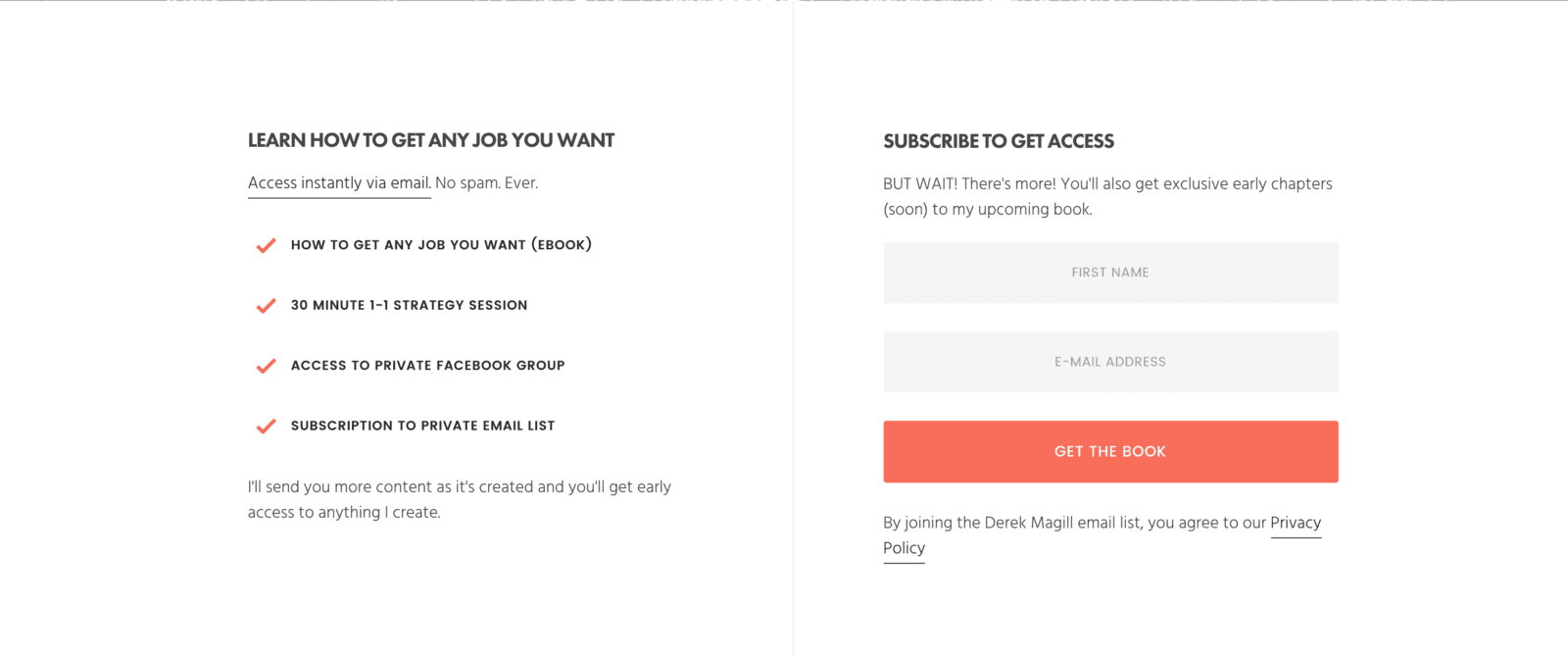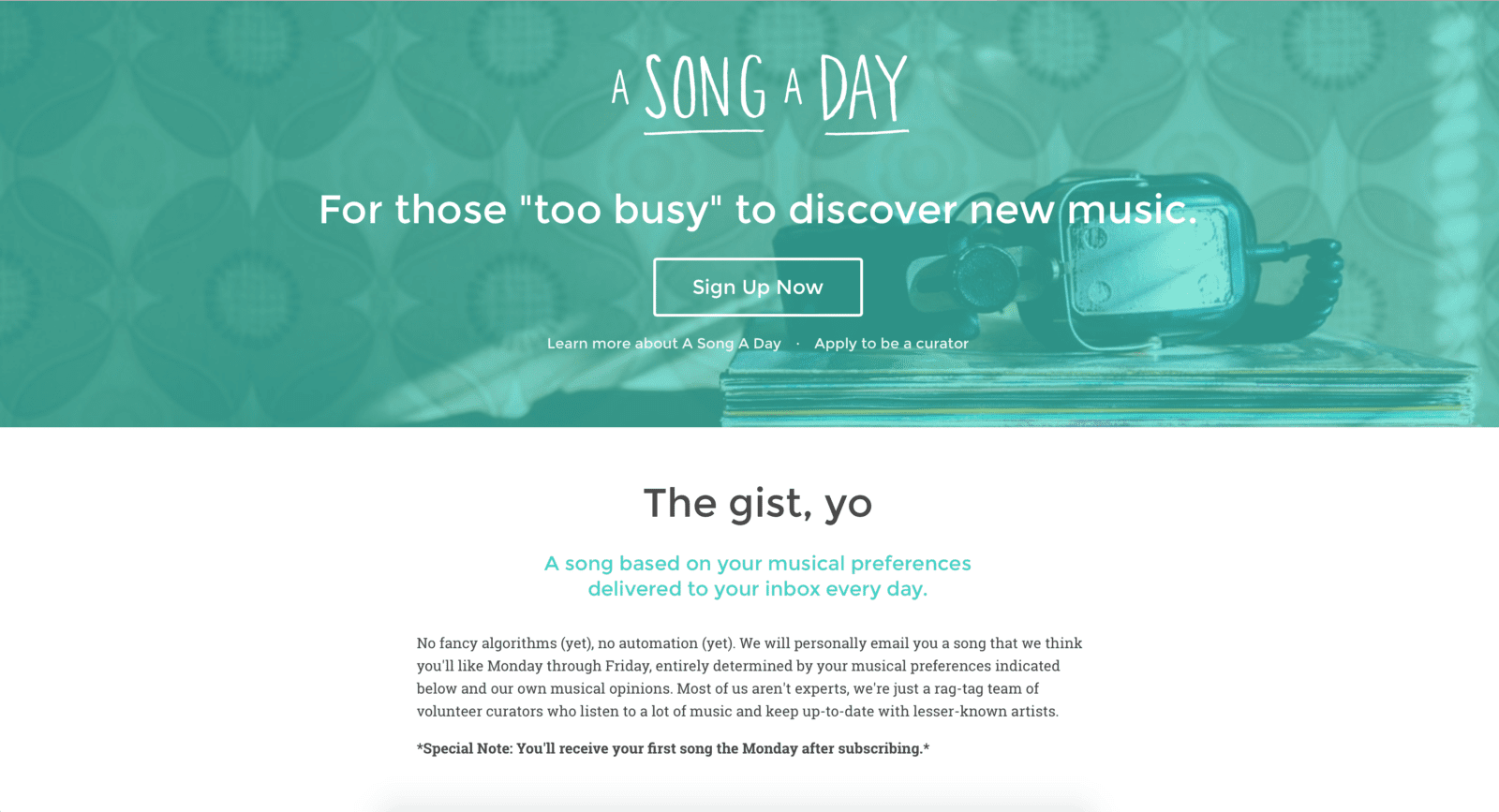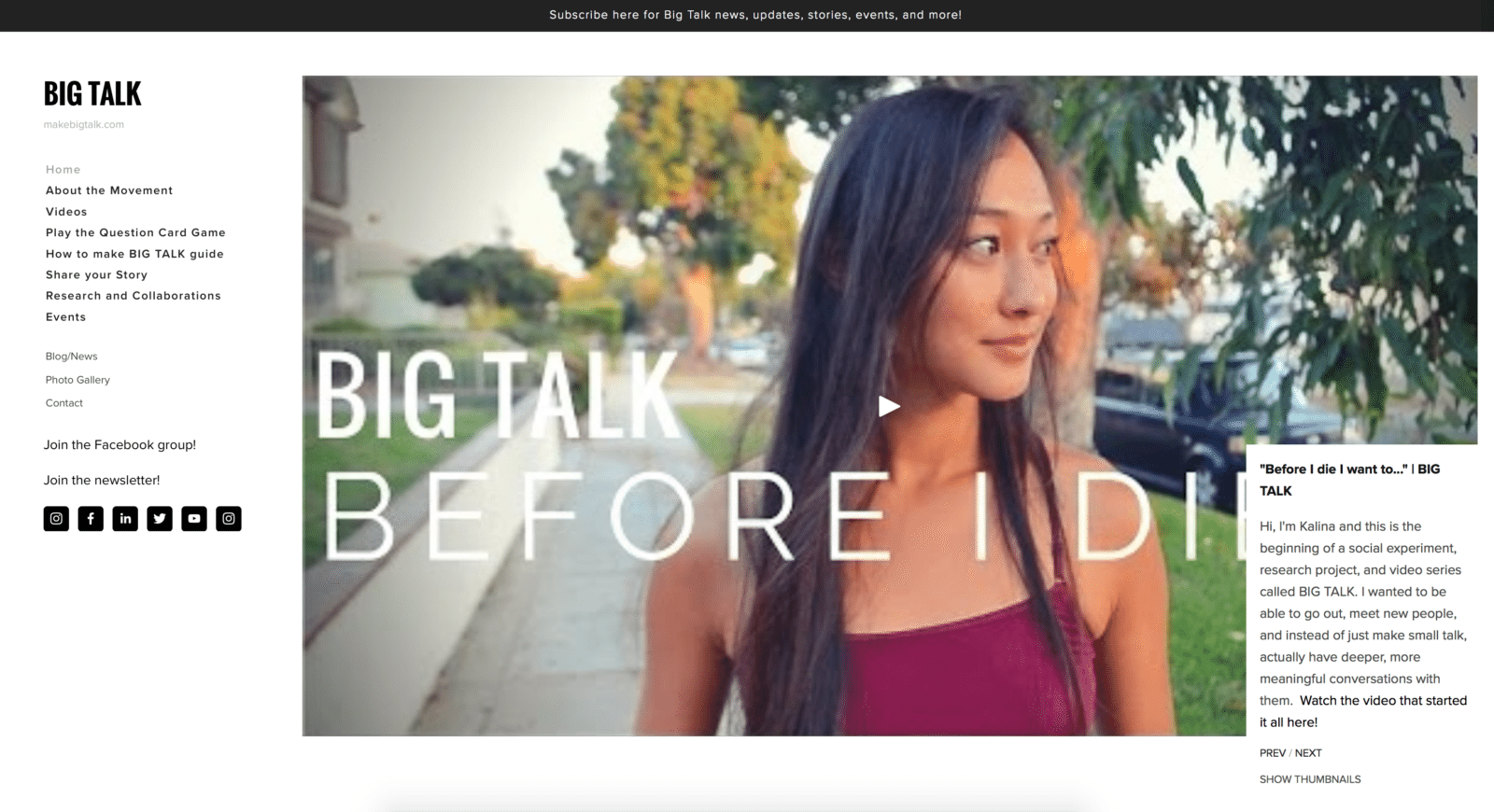Two young professionals are applying for the same job at a startup.
Person one, a graduate from a respected university, has a resume he got professionally edited through a service online. The resume lists his education, competencies, and relevant work experience during some summer internships while he was in school. By all accounts, it’s a solid, polished resume that anyone would be proud of.
He doesn’t get a call back. His resume got a 30 second lookover and it was on to the next in the queue.
The employer hired Person Two that day.
Person Two had a resume, but he knew that was the least interesting part about him. Over the last two years, he’d successfully launched and managed six different professional side projects ranging from a custom made WordPress theme that he sold on StudioPress to a email list that curated great Facebook ads for an audience of over 1,000 once per week. He’d also recently recorded a 6 part podcast series where he interviewed the creators of his most frequently used IOS applications. His background wasn’t traditional or formal–he chose an alternative to college and the typical path.
But, when it was time for the employer to review his resume, he saw all of these projects documented. The projects told him a number of things about Person Two that a resume couldn’t have:
- He had an eye for design — the website theme he built was beautiful.
- He knew how to build an email list. 10,000 subscribers is no small number.
- He was a get-sh*t done kind of guy. If he had ideas, he made them happen. No excuses.
To the employer, the choice between Person One and Person Two was a no brainer.
Your Resume is Overrated — Show Me What You’ve Built
So what made the difference that day? Why is it that Person One did everything he was told to do and yet still got passed up?
It starts with a difference in approach: Telling vs Showing.
Person One told, through his resume, why he was qualified to get the job. Person Two showed hard proof of what he could do. The projects he’d taken on and completed spoke for themselves.
The truth is a resume has never been a particularly good way at vetting people for a job. It’s an easy thing to game and it’s highly commoditized. It’s just been the best way we’ve had for a long time.
But it’s no longer enough to list your qualifications on a resume and expect employers to come chasing after you. For most people, it’s incredibly difficult or impossible to communicate effectively your skills, competencies, and interests in a short bullet point.
Employers want to see what you’ve created, and there’s no better way to do this than professional side projects.
If you’re a developer, you should be building apps, microsites, and a Github profile.
If you’re a marketer, you should be blogging about marketing, taking on projects around your interests, and documenting your learning.
Designer? Design a WordPress theme and put it up for sale. Start a Dribbble account or build a service that offers design review.
Professional projects accomplish everything a resume attempts to do and more:
- They demonstrate your hard skills coding like design, sales, and marketing.
- They show of your soft skills like grit, creativity, ambition, and writing.
- They make you more interesting and show off your passions.
- They establish an online paper trail of your work that employers can verify on their own.
Another benefit of side projects is that they help you build a network, which we all know is how most people get their jobs anyway. The very act of putting your projects out into the world will help draw like minded individuals to you that could lead to huge professional opportunities.
A good example of this comes from Praxis Education Director T.k. Coleman. When our CEO Isaac Morehouse was looking to build out the first iteration of the Praxis curriculum, T.k. was his first choice because he saw that T.k. had been publicly blogging everyday for over a year as his project. The level of commitment and the quality of his writing sold Isaac on T.k.
How to build your first professional side project the right way
So how do you get started?
Earlier this year I decided I wanted to become more established as an authority on how to get a job. The lowest barrier to entry way I saw to do this was to put together a short free ebook.
The process I went to from idea to launch was simple and replicable. I recommend using this framework for your side projects, especially your first few.
Start with a short timeline to get the project completed
I gave myself a 30 day window to get the book finished, a landing page setup, and a basic email automation done.
At Praxis, we like 30 day launch windows for projects because it forces you to act. The goal with these projects isn’t for their first iteration to be perfect. It’s to put a completed product out into the world that you can show to others. Paralysis by analysis is an enemy that will take your projects to the grave.

Think small about the project — “simple” and “easy” are your friends.
The timeline also helped me think small. In the past, project ideas went to the wayside because I simply didn’t have enough time to work on them. While I planned to release a full, updated ebook in the future, I realized the marginal gains I would receive from a totally polished product were slim in comparison to the huge upside of getting version 1 done.
Ask yourself “can I repurpose something that I or others have already?
Your project doesn’t need to be something entirely new. Most of the content for my ebook had already been written by myself and others. The ebook was simply a way to repackage it into a branded project that could be showcased better online.
Let’s say you’ve got some Adobe InDesign templates you created at work for pitching new clients. Rather than thinking up a whole new project, you could simple take those InDesign files and put them up on a landing page with a PayPal link to buy. Project done.
Think outside the box a bit
It doesn’t even matter if the projects are directly related to the career you’re trying to enter. The general principle is this: just build interesting things around the things you’re interested in.
If you’re a salesperson who has an interest in photography, launch a stock photo site featuring your photos.
If you’re a social media manager who also loves Sci-Fi, build an online resources about the best uknown Sci-Fi books out there.
To illustrate this further, consider the example of A Song a Day.
Started as a small project by Shannon Byrne to curate music for her friends, it quickly grew into a sizeable daily email with music curators from around the world.

If Shannon were to apply for a job, she could put a resume together that gives bullet points like “skilled in WordPress site development, design, and email marketing. Passions include music…”
Or she could show the employer A Song a Day, which demonstrates her those skills and her passion for music in a real world way.
There’s no comparison. If a picture is worth a thousand words, a project is worth a thousand bullet points.
Or consider Make Big Talk by Kalina Silverman.
In Kalina’s words:
I started BIG TALK as a personal social experiment, research project, and video series one summer, because I wanted to be able to go out of my way to meet new people and instead of just make small talk, actually have deeper, more meaningful conversations with them right away.
Her videos have led to job offers, TED Talks, new friendships, and new opportunities.

Kalina’s project speaks volumes about the kind of person she is, her interests, and her skills and competencies in a way a resume never could.
Next steps: kill your resume and start making things
Whether you like it or not, the hiring process is moving further and further away from traditional standards like degrees and resumes, and more towards professional projects and the work you’ve done.
The upside is this: it’s never been easier to take on an independent project. Technology that normally required consultants charging thousands of dollars per hour to set up are now available at your fingertips.
There’s no excuse for not taking advantage of it.
Resolve today take on a professional project over the next thirty days. If you want feedback or support, just comment on this post and we’ll get back to you. We’d love to know what you’re building.
July 18, 2016
